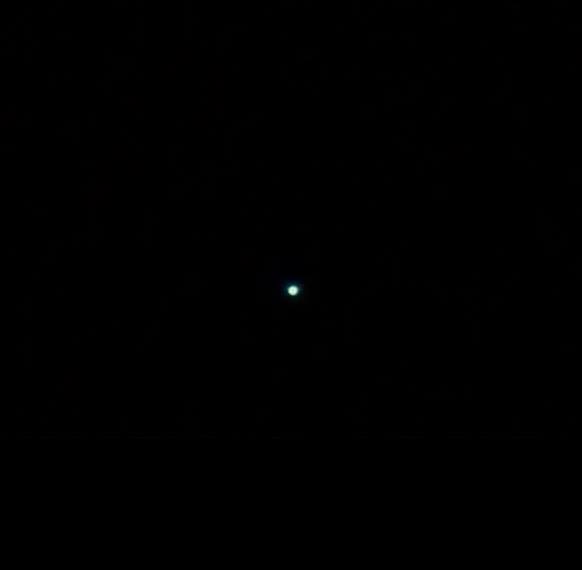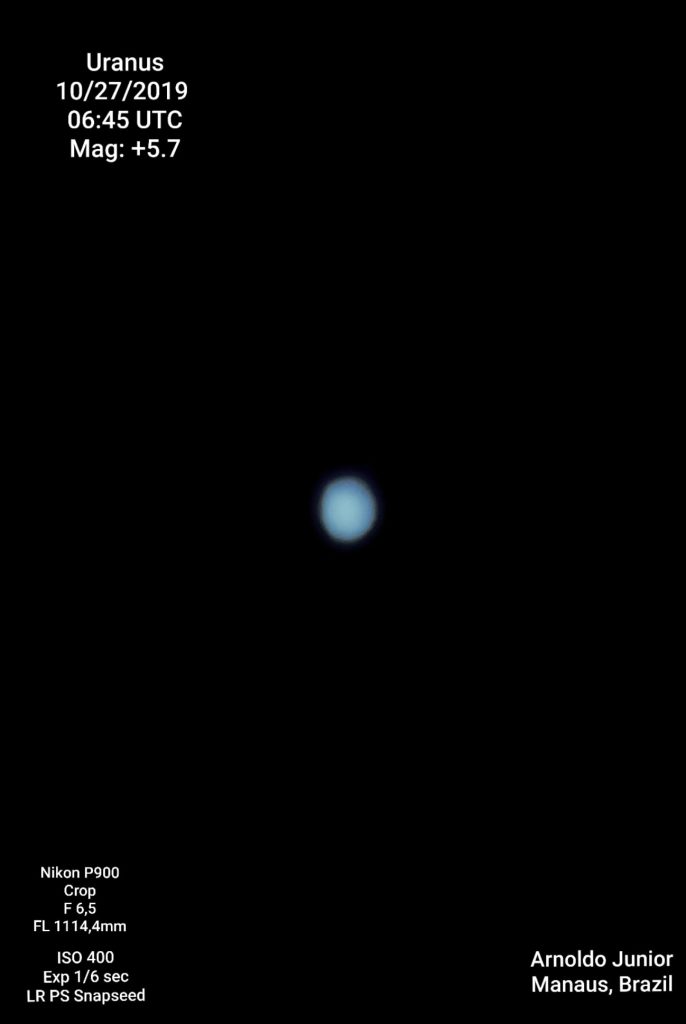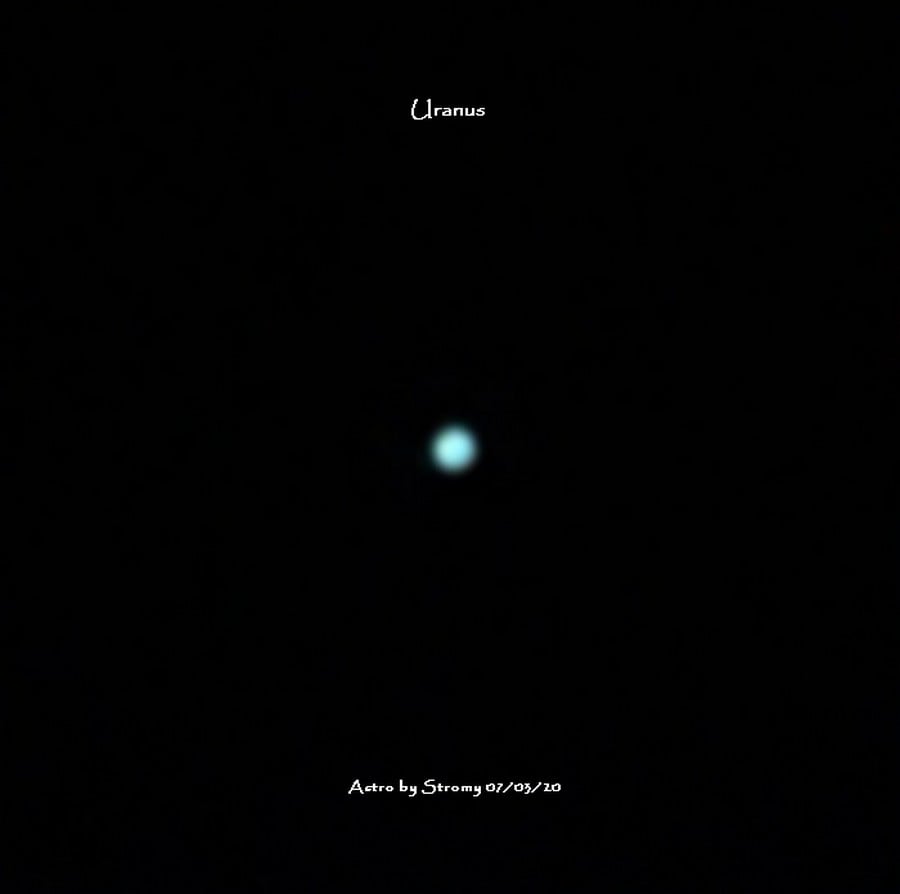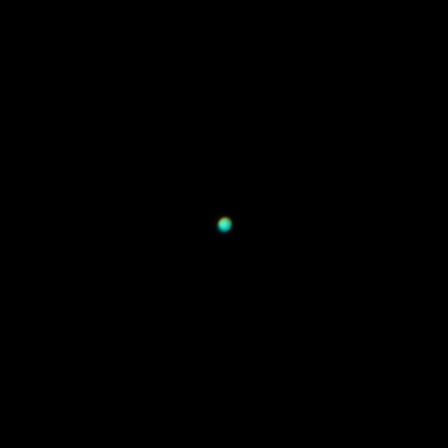See Uranus Through Telescope





Uranus is the seventh planet from the sun. Uranus can be seen with a telescope, transforming it from a faint star-like object into a distinct celestial body. With a small telescope of around 60 mm (2.4 inches) in aperture, one can resolve the disk of Uranus and distinguish it from background stars. Moderate magnification between 100x and 150x further enhances the view, revealing Uranus as a tiny bluish-green dot. Star charts are essential tools for locating Uranus among the multitude of stars, as it is not visible to the naked eye like other bright planets.
Uranus appears as a small, pale blue-green or aquamarine disk when viewed through a telescope. Despite its immense distance from Earth, it has a steady glow that helps distinguish it from surrounding stars. Even with larger telescopes, no surface details can be discerned, and Uranus appears as a featureless, homogenous pale sphere. Its bluish-green color is due to methane in its atmosphere, and its odd 98-degree axial tilt causes it to appear to roll along its orbit. Some observers report subtle cloud bands or belts on Uranus under ideal conditions.
Bright stars and constellations can be used as guideposts to find Uranus, and a star chart or planetarium software can be consulted for its position. Observing Uranus around opposition provides the best view, as it is closest to Earth and visible all night long. A dark location with minimal light pollution and clear skies is ideal for observing Uranus. A blue or violet filter can enhance the visibility of Uranus’ cloud features and reduce the glare from its bright disk. With a larger telescope, one may even be able to see Uranus’ faint rings or some of its larger moons, such as Titania and Oberon.
Can you see Uranus with a telescope?
Yes, you can see Uranus with a telescope. With the aid of a small telescope (around 60 mm (2.4 inches) in aperture) you can begin to resolve the disk of Uranus. Moderate magnification (between 100x and 150x) reveals Uranus as a tiny bluish-green dot in the vast expanse of space.
Uranus is the first planet discovered through the use of a telescope. Uranus presents a unique challenge and reward for stargazers. While the other bright planets (Mercury, Venus, Mars, Jupiter, and Saturn) are visible to the naked eye from our home planet, Earth, Uranus requires optical aid to be properly observed and appreciated.
Larger amateur telescopes with an aperture of 8 to 10 inches or more are required for detailed view of Uranus. These more powerful instruments can discern surface details and features on Uranus, as well as potentially spot some of its larger moons, such as Titania and Oberon. Uranus will appear as a pale blue-green disk with a diameter of around 3.5 to 4.1 arcseconds under ideal viewing conditions. Patience and dark skies with excellent visibility can provide experienced observers with an unforgettable image of this distant planet.
Can you see Uranus at night without a telescope?
Yes, it is possible to see Uranus at night without a telescope. Uranus, the seventh planet from the Sun, can be seen from Earth with the naked eye under ideal circumstances. Uranus appears as a faint, blue-green dot in the vast expanse of the night sky. The circumstances for observing Uranus are explained below.
Firstly, the observer must be in a very dark location with minimal light pollution. Ensure that the night sky is clear and cloudless.
Secondly, Uranus must be at opposition. Uranus must be on the opposite side of the Earth from the Sun, which significantly increases its visibility.
Thirdly, Uranus must be at its brightest, around magnitude 5.7, which occurs when it is at perihelion, the point in its orbit when it is closest to the Sun and at opposition.
Distinguishing Uranus from other stars is quite challenging. Prior knowledge of its position and movement is crucial for successful identification. To make the task easier, most people find it helpful to use binoculars or a small telescope. Telescope or binoculars greatly enhance the viewing experience and make Uranus more readily visible against the backdrop of distant stars.
Can you see Uranus rings with a telescope?
Yes, it is possible to see Uranus’ rings with a telescope, but it requires a significant amount of magnification and a high-quality instrument. The rings are not visible with smaller telescopes or binoculars from a home setting on Earth. Large telescope is necessary to capture a clear view of Uranus’ rings.
Typical backyard telescopes make Uranus’ rings essentially invisible due to their extreme darkness and low reflectivity. The rings only reflect about 2% of the sunlight that hits them. To observe the rings, a telescope with an aperture of at least 12 inches (30 cm) and a magnification of around 200-300x is necessary. The rings will appear as a faint, diffuse halo around the planet.
Moderate-sized telescope and favorable viewing conditions are necessary to see the brighter rings of Uranus. Rings stretch out to about 73,150 kilometers (45,500 miles) from the planet’s center. Uranus’ rings are much less prominent than Saturn’s and are composed of dark material, making them a challenging but rewarding target for amateur astronomers.
What does Uranus look like through a telescope?
Uranus looks like a small, pale blue-green or aquamarine disk when viewed through a telescope. Uranus’ appearance is described as a tiny, featureless sphere due to its immense distance from Earth. Uranus has a steady glow that helps distinguish it from surrounding stars. Surface details of Uranus can’t be discerned even with larger telescopes. Uranus appears as a featureless, homogenous pale sphere.
Uranus looks like a small, distant planet with a faint, blue-green image when viewed through a telescope. A telescope of at least 4 inches of aperture and around 150x magnification makes Uranus’ five brightest moons visible as points of light around the planet’s disk. These moons are Titania, Oberon, Umbriel, Ariel, and Miranda in order of brightness. With a telescope of at least 6 inches (15 cm) in diameter, Uranus can be seen as a tiny, featureless disk with a ellipsoidal shape.
The planet’s atmosphere scatters sunlight, giving Uranus a hazy appearance. Uranus appears as a faint, misty blue-green dot under ideal conditions. The diameter of Uranus is around 3.5-4.5 arcseconds, roughly 1/75th the diameter of the full Moon. The planet’s low surface brightness and lack of prominent features make it a challenging object to view from Earth.
Uranus has a bluish-green color due to methane in its atmosphere. The planet’s odd 98-degree axial tilt causes it to appear to roll along its orbit. Some observers report subtle cloud bands or belts on Uranus under ideal conditions. The Voyager 2 spacecraft showed Uranus as a largely featureless blue-green ball in visible light. More atmospheric details were revealed in infrared wavelengths. Uranus displays a smooth, plain appearance through telescopes compared to other gas giants.
What color does Uranus appear to be through a telescope?
Uranus planet appears to be a pale blue-green or cyan hue. Coloration sets Uranus apart from other celestial bodies in our solar system. This unique color is not just an aesthetic feature but is a result of the planet’s atmospheric composition.
The color of Uranus is primarily due to the presence of methane gas in its atmosphere. Methane is a potent absorber of red wavelengths of sunlight, which results in the blue-green color that we perceive. This phenomenon is not exclusive to Uranus but is observed in Neptune, leading to an ongoing debate among astronomers and enthusiasts.
The debate centers around whether Uranus appears more greenish compared to Neptune, which seems to have a deeper blue hue. A recent study re-analyzing images from the Voyager 2 spacecraft and ground-based telescopes has shed new light on this topic. The study found that Uranus and Neptune are more similar in color than previously thought, both displaying a pale, robin’s egg bluish-green hue.
The study revealed that Uranus’ color can vary depending on its position in its orbit. During solstices, when one pole of Uranus points towards the Sun, the planet appears greener. During equinoxes Uranus looks bluer.
How to see Uranus through a telescope?
To see Uranus through a telescope, follow the steps listed below.
- Use a telescope with an aperture of at least 4 inches (10 cm)
- Employ magnification around 150x or higher
- Use bright stars and constellations as guideposts to find Uranus
- Consult a star chart or planetarium software for Uranus’ position
- Use a moon filter or a neutral density filter to reduce the brightness of nearby stars
- Observe Uranus around opposition for the best view
- Find a dark location with minimal light pollution and clear skies
- Use a blue or violet filter (Wratten 38A or 47) to enhance visibility
- Look for a small, pale blue-green disk in the telescope
- Use a camera or CCD camera attached to the telescope to capture images
- Take multiple exposures and use image processing software to enhance images
First and foremost, you’ll need a telescope with an aperture of at least 4 inches (10 cm). The larger the aperture, the better the view, so if you have access to a telescope with an aperture of 8-10 inches, you’ll be able to see Uranus in even greater detail.
Employ magnification around 150x or higher. This will allow you to resolve Uranus’ disk and see it as more than just a faint star-like point. Start with lower magnification to locate Uranus, then gradually increase to medium or high magnification (150x to 250x) for the best view.
Use bright stars and constellations as guideposts to find Uranus in the night sky. Triangulum, Aries, and the Great Square of Pegasus can all serve as helpful reference points. Consult a star chart or planetarium software to find Uranus’ position relative to these reference points. Use a moon filter or a neutral density filter to reduce the brightness of nearby stars and improve your view of Uranus.
The best time to observe Uranus is around opposition, which occurs every 369.6 days. At opposition, Uranus is closest to Earth and visible all night long. It’s at its brightest, with a magnitude around 5.7. You can check planetarium software or websites for exact opposition dates.
When looking for Uranus, it’s important to find a dark location with minimal light pollution and clear skies. Uranus is a faint object, so a dark sky is essential to see it. You can use a blue or violet filter (Wratten 38A or 47) to enhance the visibility of Uranus’ cloud features and reduce the glare from the planet’s bright disk.
Uranus will appear as a small, pale blue-green disk when you look through a telescope. Uranus is ellipsoidal in shape. With a larger telescope, you are able to see Uranus’ faint rings or some of its larger moons, such as Titania and Oberon.
Use a camera or CCD camera attached to the telescope to capture images of photos of Uranus. You need to take multiple exposures and use image processing software to combine and enhance the images.
How to find Uranus with a telescope?
To find Uranus with a telescope, follow the steps listed below.
- Determine the best viewing time, ideally between August and March when Uranus is at opposition.
- Use planetarium software, apps, or websites to find Uranus’ position in the sky.
- Set up a telescope with an aperture of at least 60 mm (2.4 inches) and a magnification of 100-200x.
- Locate Uranus in the sky using the telescope’s finder scope or a star chart; it appears as a faint, blue-green disk near the constellation Pisces.
- Enhance your view with a medium to high magnification eyepiece (100x to 200x) and consider using yellow or orange filters to reduce glare.
- Utilize detailed star charts or planetarium software to pinpoint Uranus’ exact location.
- Observe from a dark sky location away from light pollution for the best visibility.
First, determine the best viewing time. Uranus is best visible from August to March when it is at opposition, meaning it is on the opposite side of the Earth from the Sun and at its brightest. Uranus is highest in the sky around midnight, minimizing atmospheric distortion.
Next, find Uranus’ position using planetarium software, apps, or websites like Stellarium or Sky & Telescope. These tools determine Uranus’ celestial coordinates, including right ascension and declination. Consult astronomy charts or almanacs for additional guidance.
Setting up your telescope is the next crucial step. For basic viewing, use a telescope with an aperture of at least 60 mm (2.4 inches). For better detail, opt for a telescope with an aperture of at least 6 inches (15 cm). Ensure the telescope has a magnification of 100-200x to view Uranus as a disk.
Locate Uranus in the sky using the telescope’s finder scope or a star chart. Uranus appears as a faint, blue-green disk with a magnitude of around 5.7, near the constellation Pisces.
Use a medium to high magnification eyepiece (100x to 200x) and consider using filters (yellow or orange) to reduce glare and bring out cloud features. With a larger telescope (aperture > 150 mm or 6 inches), you see additional details such as Uranus’ faint ring system and subtle color variations in its atmosphere. Larger telescopes reveal Uranus’ largest moons, Titania and Oberon.
Utilize detailed star charts or planetarium software to pinpoint Uranus’ exact location, and observe from a dark sky location away from light pollution for the best visibility.
